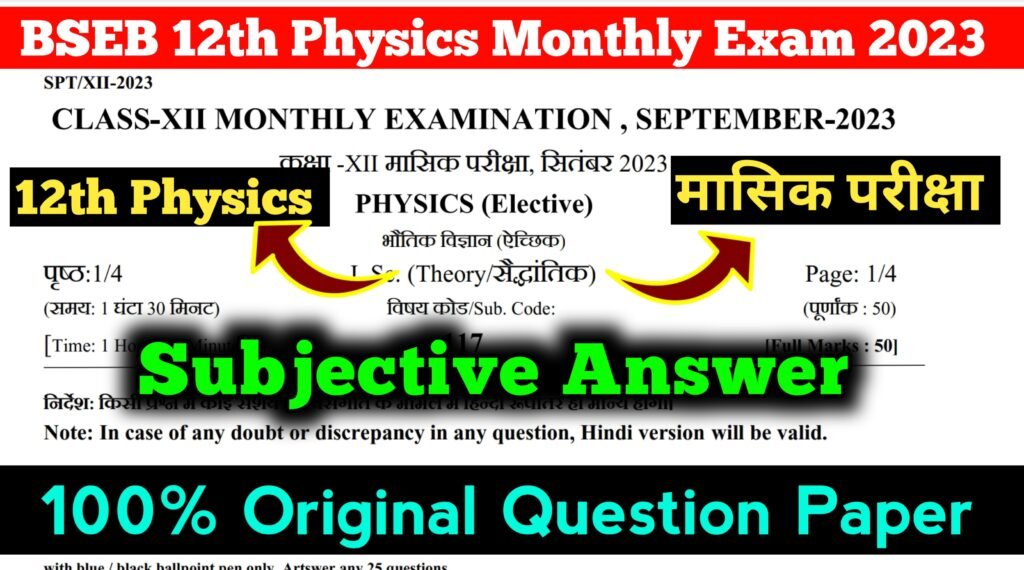
1. आवेश का क्वाण्टीकरण क्या है
Ans-: आवेश की यह मूल इकाई इलेक्ट्रॉन अथवा प्रोटॉन के आवेश का परिमाण है। परिपाटी के अनुसार, इलेक्ट्रॉन के आवेश को ऋणात्मक मानते हैं; इसीलिए किसी इलेक्ट्रॉन पर आवेश – तथा प्रोटॉन पर आवेश +e द्वारा व्यक्त करते हैं । वैद्युत आवेश सदैव का पूर्णांक गुणज होता है। इस तथ्य को आवेश का क्वांटमीकरण कहते हैं।
1. What is the quantization of charge Ans-: This basic unit of charge is the magnitude of the electron or the charge of the proton. According to the convention, the charge of the electron is considered negative; That is why the charge on an electron – and the charge on the proton is expressed by +e. The electric charge is always the integer multiplication of the charge. This fact is called quantization of charge.
3. विद्युत बल रेखाएँ एक दूसरे को क्यों नहीं काट सकती है
Ans-: बल रेखायें परस्पर एक-दूसरे को नहीं काटती क्योकि यदि ये परस्पर कटेगी तो कटान बिन्दु पर दो स्पर्श रेखायें दो परिणामी क्षेत्र को व्यक्त करेंगी जो कि असम्भय है।
3. Why electric force lines cannot intersect each other Ans-: Force lines do not intersect each other because if it intersects, then two tangent lines at the cutting point will express two resulting areas which is impossible.
5. विद्युत विभव को परिभाषित करें एवं इसकी बिमा लिखें
Ans-: विद्युत क्षेत्र में किसी बिंदु पर विद्युत विभव को उस कार्य के रूप में परिभाषित किया जाता है जो इकाई धन आवेश को अनंत से उस बिंदु तक लाने में किया जाता है। अर्थात किसी बिंदु पर आवेश की मात्रा को विद्युत विभव कहते है। विभव का SI मात्रक वोल्ट (V) है।
5. Define the electric potential and write its insurance Ans-: At some point in the electric field, the power potential is defined as the work that is done in bringing the unit money charge from infinity to that point. That is, the amount of charge at some point is called electric potential. The SI unit of the potential is volts (v).
6. विभव प्रवणता का मात्रक तथा विमीय सूत्र लिखें। /
Ans-: मात्रक-वोल्ट/मीटर तथा विमा- [MLT-3A-1]
6. Write the unit and dimensional formula of potential gradient. / Ans-: Unit-Volt/Meter and dimension- [MLT-3A-1]
8. विद्युत क्षेत्र हमेशा समविभवी सतह के लम्बवत होता है। क्यों ? /
Ans-: समविभव पृष्ठ पर एक बिन्दु से दूसरे बिन्दु तक किसी आवेश को ले जाने में कोई कार्य नहीं करना पड़ता है, अत: समविभव पृष्ठ के अनुदिश विद्युत् क्षेत्र की तीव्रता का घटक शून्य होना चाहिए, यह तभी सम्भव है जब विद्युत् क्षेत्र पृष्ठ के लम्बवत् हो। इसीलिए समविभव पृष्ठ विद्युत बल रेखाओं के लम्बवत् होता है।
8. The electric field is always perpendicular to the isotential surface. Why? /
Ans-: No work has to be done in carrying any charge on the equipotential page from one point to the other, so the component of the intensity of the electric field along the equipotential surface should be zero, this is possible only when the electric field is perpendicular to the surface. Yes. That is why the equipotential surface is perpendicular to the electric force lines.






